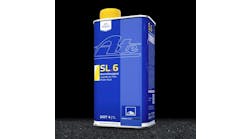Seven trade associations representing the automotive aftermarket are opposing inclusion of a "Cash for Clunkers" program within the economic stimulus plan currently being considered in Washington, D.C.
According to the Specialty Equipment Market Association (SEMA), Cash for Clunkers would use taxpayer dollars to purchase and crush older vehicles into blocks of scrap metal. "There is no evidence that the program will achieve the stated goal of boosting new car sales."
In a show of solidarity, the seven groups submitted a joint letter to the U.S. Congress urging lawmakers to reject a program that "for no proven value would do significant harm to the automotive aftermarket," a $285 billion industry that employs approximately 4.5 million Americans in all 50 states.
The seven groups are: SEMA, the Tire Industry Association, the Automotive Aftermarket Industry Association, the Automotive Engine Rebuilders Association, the Automotive Parts Remanufacturers Association, the Automotive Warehouse Distributors Association and the Automotive Transmission Rebuilders Association.
"These programs have been generally rejected by the states since they are not a cost-effective means to improve fuel mileage, reduce emissions, or spur to new car sales," the groups wrote. "Conversely, Cash for Clunkers programs threaten jobs in the automotive aftermarket since they remove the opportunity to repair and upgrade existing cars and raise the price of used cars and parts."
According to the aftermarket letter, Cash for Clunkers is a "sounds good" idea that has been around for at least two decades. Upon closer scrutiny, it has always been rejected by Congress for the following reasons:
1. Clunker programs focus on a vehicle's age rather than a vehicle's emissions, based on the erroneous perception that all older cars are dirty cars. However, there are no actual emissions measurements taken for cars that are scrapped. Rather, the programs "estimate" emissions reductions, numbers that are significantly overstated.
2. Clunker programs rarely capture the "gross polluter," an improperly maintained vehicle of any model year, which puts out dramatically more emissions due to poor maintenance. Those seeking a quick fix through vehicle clunker programs ignore this reality.
3. Clunker programs diminish the availability of affordable transportation and repair parts to low-income drivers as more and older cars are crushed. Most low-income individuals will not be able to afford to purchase new vehicles, let alone more fuel efficient or cleaner vehicles, with the money provided by clunker programs.
4. Clunker programs compete with charitable organizations such as Melwood Industries, the Congressionally-chartered Military Order of the Purple Heart and the Salvation Army that rely on used car donation programs to fund their programs.
5. Auto restoration, customization and repair shops nationwide will suffer with the loss of older cars, trucks and parts they need to supply and service their customers, according to the group.
6. Cash for Clunkers programs risk destroying classic,
historic and special interest vehicles. "America safeguards its artistic and architectural heritage against indiscriminate
destruction. Our automotive and industrial heritage deserves the same
protection."
7. Clunker programs do not guarantee that a scrapped vehicle will be replaced with a more fuel-efficient vehicle. In fact, many older vehicles get better fuel mileage than the newer models.
8. Cars turned in for scrappage often are rarely-driven second
or third vehicles that have a minimal impact on overall fuel economy or
emissions.
9. There is no evidence that clunker programs boosts demand
for new vehicles, drives traffic to new car dealerships or creates or retains
jobs.
The aftermarket associations
pledged support for legislation to provide tax incentives to purchase new cars
such as allowing deductions for interest on car loans and state sales tax. The
groups also support tax credits to help upgrade, repair or maintain an older
vehicle.
"A number of commercially available products and technologies exist that will substantially lower the emission rates of older vehicles while also offering the owner added performance, drivability and fuel mileage. These innovative solutions drive product sales, produce American jobs and secure tax revenues for the government -- all while sustaining the multi-billion dollar motor vehicle aftermarket," the groups concluded.



